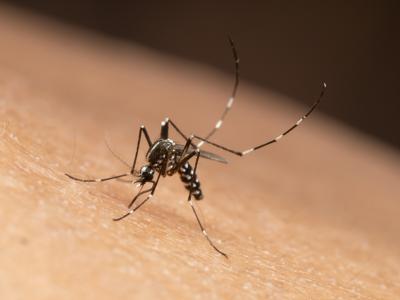Mar 2, 2012
WHO confirms two H5N1 cases, one fatal
The World Health Organization (WHO) yesterday and today confirmed two previously reported H5N1 avian influenza infections, in a 40-year-old man from Bangladesh who recovered and in a 12-year-old Indonesian boy who died. The two cases raised the WHO's H5N1 global total to 591 cases and 349 deaths. In its statement today on the Bangladesh case, the WHO said the man's infection was identified as part of live bird market surveillance system on Feb 26. The Dhaka City resident presented with a cough and has recovered, the report said, and health officials are investigating the source of the man's infection. His illness pushes the country's number of H5N1 cases to 4, none of which have been fatal.
Mar 2 WHO statement
Yesterday the WHO confirmed H5N1 in the death of a boy from Bali whose fatal infection was first reported by the Indonesian media last week. According to the WHO
statement, the boy, from Badung, got sick on Feb 11 and was admitted to a private clinic 5 days later. He was taken to an avian influenza referral hospital on Feb 20 but died the next day. An investigation found that the boy had been in contact with poultry, though no bird deaths in the household or neighborhood were reported. A probe into other risk factors is still under way. His case brings Indonesia's H5N1 total to 186 cases, including 154 deaths.
Mar 1 WHO statement
Mar 1 WHO global H5N1 case count (excluding the Bangladesh case)
Feb 24 CIDRAP News Scan "Egypt, Indonesia report H5N1 cases, one fatal"
H5N1 kills poultry in Vietnam, Bhutan
Veterinary officials in Bhutan and Vietnam today reported fresh H5N1 avian influenza outbreaks in poultry, according to reports to the World Organization for Animal Health (OIE). The outbreak in Vietnam struck backyard birds in a village in Quang Ninh province, located on the country's northeastern coast. The virus started on Feb 21, killing 200 birds. Cullers destroyed 230 more co control the spread of the virus.
Mar 2 OIE report on Vietnam
Meanwhile, the virus hit backyard birds in four villages and one farm in Bhutan, all in Chukha district, according to a separate OIE report. Across the five outbreaks, the virus killed 36 birds, and 1,361 more were destroyed to curb the disease.
Mar 2 OIE report on Bhutan
In other H5N1 developments, Hong Kong authorities
have confirmed H5N1 in three more wild birds, according to a Mar 1 OIE report. All the birds were found dead in various locations Feb 24 to Feb 27. They included two Oriental magpie robins, common residents of Hong Kong. The third was a crested goshawk, which isn't commonly found in the area. Over the past few months, Hong Kong has reported several similar detections and has stepped up surveillance of poultry farms, poultry markets, and pet bird shops.
Mar 1 OIE report on Hong Kong
Study: Flu strains can infect through ocular route
Researchers have confirmed for the first time that flu viruses can travel from the eye to the respiratory tract, according to a study in Public Library of Sciences (PLoS) Pathogens. Human infections with H7 viruses have been associated with conjunctivitis, but little was known about the virus's ability to mount an infection in the eye and spread to other parts of the body. The team, led by scientists at the US Centers for Disease Control and Prevention (CDC), inoculated the eyes of ferrets with a variety of influenza subtypes, including H7, seasonal strains, pandemic H1N1, and H5N1 avian flu. Then they measured detectable virus at several sites at regular intervals. They found that several influenza types were able to mount an infection in the upper airway after ocular inoculation and that H5N1 was able to spread to other body systems and cause deadly infections. In addition, after eye inoculation with seasonal flu
viruses, transmissibility through respiratory droplets spread through upper airway infection was reduced. The authors wrote that the findings shed light on the ability of flu viruses to infect by the ocular route. They said that, while more studies are needed to determine the mechanisms that regulate infections through the ocular route, the findings support the role of eye protection during occupational exposure to aerosols that contain flu viruses.
Mar 1 PLoS Pathog study





















